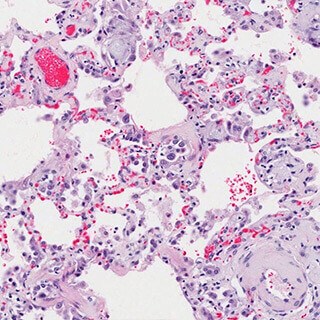Lobular Carcinoma

Lobular Carcinoma in Situ (LCIS)
Lobular Carcinoma in Situ (LCIS) is the presence of abnormal cells that form in the milk-producing lobules. LCIS is not cancer, but it is an indication that you have an increased risk of developing invasive cancer.
Because LCIS cells are confined within the lobules, it is not life-threatening. If diagnosed, you have time to thoroughly research treatment options before making a decision. It is very important to complete treatment, however, because women with LCIS have a higher risk of developing invasive breast cancer in either or both breasts.
Facts About LCIS:
- Accounts for about 10–15 percent of all breast cancers.
- About 25 percent of those diagnosed with LCIS develop invasive breast cancer within 25 years
LCIS can’t be seen by a mammogram. Usually, it is found by chance when a sample of breast tissue is biopsied for a lump or other abnormalities found by mammogram.
LCIS was once treated with bilateral mastectomy. While this may still be the best course of action if you are diagnosed with LCIS and have widespread calcifications or a strong family history of breast cancer, breast removal is usually unnecessary, since most women with LCIS will never develop breast cancer. In fact, The National Comprehensive Cancer Network recommends ongoing close surveillance for women with LCIS, including a clinical breast exam every six months and an annual mammogram, to catch any developing breast cancer at an early stage when it can be treated successfully.
Your oncologist may prescribe tamoxifen for five years to reduce by half your chance of developing breast cancer. Tamoxifen can produce side effects, so be sure to discuss both its benefits and limitations with your doctor before deciding if it is right for you.
You may also be eligible to participate in a clinical trial to examine new treatments for LCIS. Visit www.cancer.gov/clinicaltrials for more information about clinical trials.
Invasive/Infiltrating Lobular Carcinoma (ILC)
Invasive lobular carcinoma (ILC) develops in the milk-producing lobules of the breast and spreads to the surrounding breast tissue. It can also spread to more distant parts of the body.
ILC occurs more often in women between ages 45 and 56. A portion of your breast may seem thicker, but you might not feel a lump. Advanced tumors may cause the breast skin over the area of the tumor to pucker.
Compared to IDC, ILC is more difficult to detect by touch or mammogram; the extent of ILC cannot be determined by mammography. The characteristics of ILC are generally associated with improved outcome: it grows more slowly than IDC, is almost always HER2-negative, and is more likely to be estrogen-positive.
ILC Facts:
- Accounts for one of 10 invasive breast cancers.
- More difficult to find than IDC.
- Tumors are more likely to be larger than IDC.
- Almost always HER-2 negative.
- Chemotherapy not as effective as other, faster-growing breast cancers.
ILC is often multricentric or found in more than one part of the breast. In about 30 percent of cases, ILC is found in the opposite breast as well. Although ILC was treated aggressively with mastectomy in past years, research data shows that most cases are successfully treated with lumpectomy and radiation, with a rate of recurrence and survival rate that is similar to IDC.







